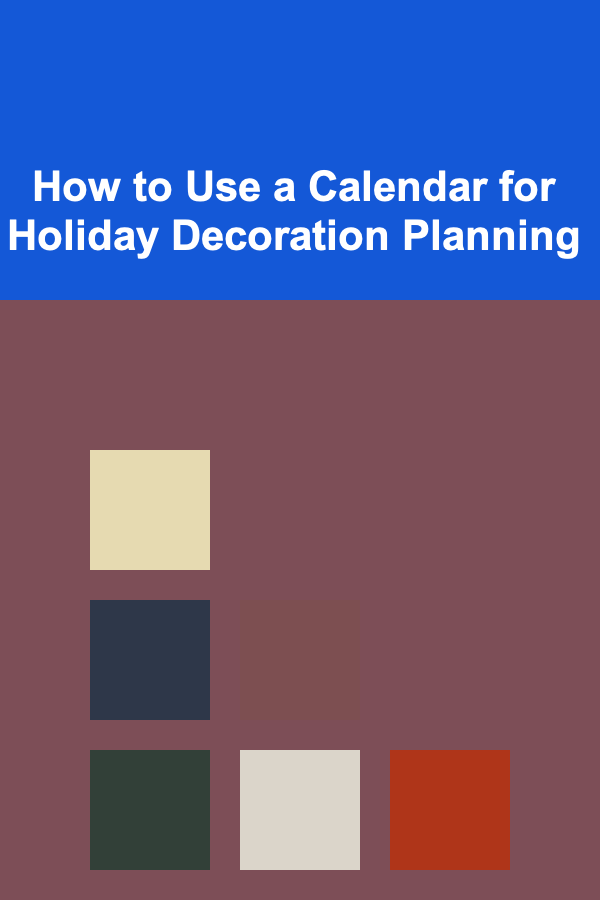
How to Design Word Search Puzzles That Sell
ebook include PDF & Audio bundle (Micro Guide)
$12.99$6.99
Limited Time Offer! Order within the next:

Word search puzzles have been a popular form of entertainment for decades. They are enjoyed by people of all ages and can be found in newspapers, puzzle books, mobile apps, and online platforms. If you've ever thought about creating word search puzzles, whether for personal use or as a way to generate income, designing puzzles that sell requires a combination of creativity, strategy, and understanding of your target market. This comprehensive guide will take you through the process of designing word search puzzles that not only captivate users but also have the potential to become profitable products.
Understanding the Popularity of Word Search Puzzles
Before jumping into the specifics of puzzle design, it's essential to understand why word search puzzles are so appealing:
- Simplicity: Word search puzzles are easy to understand and do not require advanced problem-solving skills. This makes them accessible to a wide audience, including children, seniors, and casual puzzle solvers.
- Educational Value: These puzzles help with vocabulary development, spelling, and cognitive skills. They also appeal to those who enjoy word games or language-related challenges.
- Relaxation and Stress Relief: Many people use word search puzzles as a way to unwind and relieve stress. The meditative nature of searching for words can be calming, making word searches a popular choice for leisure time.
- Versatility: Word search puzzles can cover virtually any topic, from popular culture to history, geography, and hobbies. This wide range of themes appeals to different interests.
As a designer, understanding these elements is crucial because it helps you create puzzles that cater to the specific needs and preferences of your target market. Now let's dive into how to design word search puzzles that not only engage players but also have a good chance of generating income.
Step 1: Identify Your Target Market
Before you start designing, it's important to define your target audience. Understanding who will be solving your puzzles can help guide the themes, difficulty level, and format of the puzzles.
Who are you designing for?
- Children: Word searches for kids should have simpler words, fun themes, and vibrant designs. The puzzles should be easy to solve and contain words that are relevant to their learning stage, such as animals, colors, or school-related topics.
- Seniors: Many seniors enjoy solving word search puzzles to keep their minds sharp. For this audience, you may want to use larger font sizes, straightforward themes, and puzzles with fewer distractions.
- General Puzzle Enthusiasts: This group loves challenges. Puzzles aimed at more experienced solvers may include advanced themes (e.g., world capitals, famous literature) and harder difficulty levels, with larger grids and longer word lists.
- Niche Markets: If you have a specific niche (e.g., sports fans, historical enthusiasts, travel lovers), you can design word search puzzles that cater to those interests. Niche puzzles tend to attract more passionate and engaged customers.
By identifying your target market, you can tailor the content of your puzzles to meet their specific preferences, which will increase the chances of your puzzles selling well.
Step 2: Choose a Profitable Theme
The theme you choose for your word search puzzles plays a vital role in their appeal. Some themes are universally loved, while others cater to more specific interests. A strong, well-thought-out theme will make your puzzle more attractive and marketable.
Popular and Profitable Themes
- Seasonal and Holiday Themes: Puzzles related to Christmas, Halloween, or other major holidays are popular. These puzzles can be sold as seasonal products and marketed to parents, teachers, or anyone looking for holiday-themed activities.
- Pop Culture: Puzzles related to movies, TV shows, celebrities, and famous events often draw attention. People who are fans of specific shows, movies, or celebrities are likely to purchase puzzles that feature their favorite characters or topics.
- Geography and Travel: Puzzles based on countries, cities, landmarks, or world capitals are educational and engaging. These puzzles can be marketed to students, teachers, or travel enthusiasts.
- Nature and Animals: Word search puzzles that focus on animals, plants, or nature offer endless possibilities. You can create puzzles for kids featuring common animals or more advanced puzzles for adults focusing on endangered species or ecosystems.
- History and Literature: Puzzles themed around historical events, famous literature, or influential figures appeal to a more intellectual audience. These puzzles are perfect for educational purposes and can be sold to schools, libraries, or history buffs.
- Personalized Puzzles: Offering customized puzzles with names, special dates, or inside jokes can cater to people looking for unique gift ideas.
Step 3: Design a User-Friendly Puzzle
Now that you have a theme in mind, it's time to design the puzzle itself. The goal is to create a puzzle that is engaging yet solvable, with an appropriate level of difficulty for your target audience.
Key Design Elements
- Grid Size: The size of the grid should match the difficulty level of the puzzle. Smaller grids (e.g., 10x10) are ideal for beginners or kids, while larger grids (e.g., 20x20 or more) are better suited for advanced solvers.
- Word List: The list of words should be relevant to the theme and appropriate for the target audience. Make sure the words fit well within the grid and don't overlap in confusing ways.
- Word Orientation: Words in the puzzle can be placed in various directions: horizontally, vertically, diagonally, and even backward. However, for beginner puzzles, limiting word orientations to just horizontal and vertical makes them easier to solve.
- Puzzle Clarity: Keep the puzzle visually clean and easy to read. Use clear fonts, and ensure there is enough contrast between the grid and the background so that words are easy to spot.
- Difficulty Level: A well-balanced puzzle should challenge the solver without frustrating them. If you're targeting a broad audience, offer puzzles in different difficulty levels, from beginner to expert.
Software Tools for Design
To design your puzzles, you can use a variety of tools, ranging from online puzzle generators to advanced software like Adobe Illustrator or even Microsoft Excel for a more customized approach. There are also specific puzzle creation tools like:
- Puzzle Maker: A simple online tool that allows you to generate word search puzzles quickly.
- Puzzlemaker by Discovery Education: Another popular tool for teachers and puzzle creators.
Using these tools, you can easily create professional-looking word search puzzles without needing advanced design skills.
Step 4: Add Engaging Visuals and Formatting
While the core of a word search puzzle is the words themselves, adding engaging visuals and formatting can make the puzzle more appealing and increase its marketability.
- Borders and Backgrounds: Add borders around the puzzle grid and background designs related to the theme. For instance, a holiday-themed puzzle might have a snowflake border, while an animal-themed puzzle might have a paw print background.
- Color: Use color wisely to enhance the look of your puzzle. Bold, bright colors may attract kids, while more subdued tones might appeal to adults. The key is to maintain readability and avoid making the puzzle too cluttered.
- Typography: Choose legible fonts for the puzzle itself. The word list and puzzle grid should be easy to read, even when the puzzle is printed on paper. If you're creating an online version, ensure that the fonts look good on all screen sizes.
Step 5: Market and Sell Your Puzzles
Now that you've designed your word search puzzles, it's time to think about how you'll market and sell them. There are a variety of platforms and strategies you can use to reach potential customers.
Platforms to Sell Your Puzzles
- Online Marketplaces: Platforms like Etsy, Amazon, and Gumroad allow you to sell digital downloads of your puzzles. Setting up a shop is easy, and these platforms already have a large audience, making it easier to reach customers.
- Puzzle Books: If you're creating multiple puzzles, consider compiling them into a puzzle book. You can self-publish through Amazon's Kindle Direct Publishing (KDP) or other self-publishing platforms.
- Social Media: Use platforms like Instagram, Pinterest, and Facebook to promote your puzzles. Share sneak peeks of your designs and encourage people to purchase directly from your website or marketplace.
- Educational Websites: If your puzzles have educational value, consider selling them on websites that cater to teachers or homeschool parents.
Marketing Strategies
- Offer Free Samples: Provide a free puzzle or two to give potential customers a taste of your work. This can help build trust and convince them to purchase the full collection.
- Targeted Advertising: Use social media ads to target specific groups, such as people interested in word games, puzzle lovers, or parents of young children.
- Collaborate with Influencers: Work with social media influencers in the puzzle, parenting, or educational niches to promote your puzzles to their followers.
Step 6: Monitor Feedback and Improve
Once you start selling your puzzles, it's important to monitor customer feedback. Pay attention to what your customers like and don't like, and use this information to refine and improve your designs. Offering exceptional customer service and responding to inquiries will also help build your reputation and attract repeat customers.
Conclusion
Designing word search puzzles that sell requires creativity, understanding your audience, and leveraging the right platforms for promotion. By choosing an appealing theme, designing user-friendly puzzles, adding engaging visuals, and marketing effectively, you can turn your passion for puzzle creation into a profitable venture. Whether you're designing for kids, seniors, or puzzle enthusiasts, the possibilities are endless. Follow these steps to create puzzles that captivate and sell, and enjoy the rewards of your hard work and creativity.
Reading More From Our Other Websites
- [Personal Finance Management 101] How to Leverage Investing for Millennials: Strategies to Achieve Early Retirement Goals
- [Toy Making Tip 101] DIY Toy Production: Affordable Tools for Small-Batch Creations
- [Ziplining Tip 101] Capturing the Ride: Photography Tips for Stunning Mountain Zipline Shots
- [Personal Care Tips 101] How to Combine Nail Polish Remover with Essential Oils for a Refreshing Scent
- [Organization Tip 101] How to Track Expiration Dates on Perishable Items
- [Organization Tip 101] How to Optimize Vertical Space in a Small Craft Area
- [Organization Tip 101] How to Utilize Drawer Systems for Small Items
- [Scrapbooking Tip 101] Must-Have Scrapbooking Essentials: A Beginner's Supply Checklist
- [Home Rental Property 101] How to Conduct a Thorough Property Inspection Before Renting
- [Personal Care Tips 101] How to Use Toner to Balance Oil and Hydration

How to Choose the Best Lighting Fixtures for Your Home Renovation
Read More
How to Turn Your Closet Into a Mini Home Office for Space Saving
Read More
How to Use a Calendar for Holiday Decoration Planning
Read More
Top Tips for Utilizing Free or Discounted Museum and Attraction Passes on Your Next Trip
Read More
How to Post-Process and Paint 3D Prints
Read More
10 Tips for Handling Legal Documents on Your Separation To-Do List
Read MoreOther Products

How to Choose the Best Lighting Fixtures for Your Home Renovation
Read More
How to Turn Your Closet Into a Mini Home Office for Space Saving
Read More
How to Use a Calendar for Holiday Decoration Planning
Read More
Top Tips for Utilizing Free or Discounted Museum and Attraction Passes on Your Next Trip
Read More
How to Post-Process and Paint 3D Prints
Read More